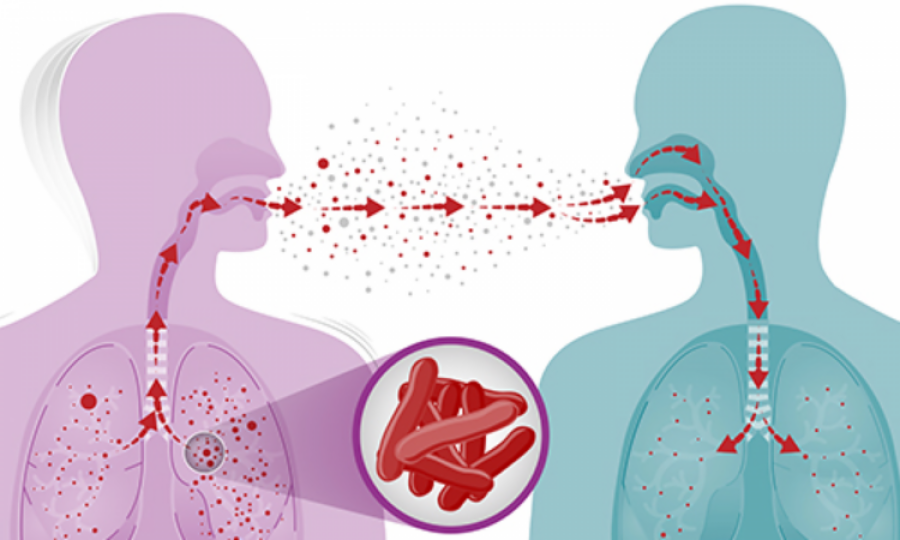Tuberculosis deaths and disease increase during the COVID-19 pandemic

Geneva: An estimated 10.6 million people fell ill with tuberculosis (TB) in 2021, an increase of 4.5% from 2020, and 1.6 million people died from TB (including 187 000 among HIV-positive people), according to the World Health Organization’s 2022 Global TB report. The burden of drug-resistant TB (DR-TB) also increased by 3% between 2020 and 2021, with 450 000 new cases of rifampicin-resistant TB (RR-TB) in 2021.
This is the first time in many years an increase has been reported in the number of people falling ill with TB and drug-resistant TB. TB services are among many others disrupted by the COVID-19 pandemic in 2021, but its impact on the TB response has been particularly severe. Ongoing conflicts across Eastern Europe, Africa and the Middle East have further exacerbated the situation for vulnerable populations.
“If the pandemic has taught us anything, it’s that with solidarity, determination, innovation and the equitable use of tools, we can overcome severe health threats. Let’s apply those lessons to tuberculosis. It is time to put a stop to this long-time killer. Working together, we can end TB,” said Dr Tedros Adhanom Ghebreyesus, WHO Director-General.
Continued challenges with providing and accessing essential TB services have meant that many people with TB were not diagnosed and treated.
Reductions in the reported number of people diagnosed with TB suggest that the number of people with undiagnosed and untreated TB has grown, resulting first in an increased number of TB deaths and more community transmission of infection and then, with some lag-time, increased numbers of people developing TB.
The number of people provided with treatment for RR-TB and multidrug-resistant TB (MDR-TB) has also declined between 2019 and 2020. The reported number of people started on treatment for RR-TB in 2021 was 161 746, only about one in three of those in need.
The report notes a decline in global spending on essential TB services from US$6 billion in 2019 to US$5.4 billion in 2021, which is less than half of the global target of US$13 billion annually by 2022. As in the previous 10 years, most of the funding used in 2021 (79%) was from domestic sources. In other low- and middle-income countries, international donor funding remains crucial. The main source is the Global Fund to Fight AIDS, Tuberculosis and Malaria (the Global Fund). The United States Government is the largest contributor of funding to the Global Fund and is also the largest bilateral donor; overall, it contributes close to 50% of international donor funding for TB.
““The report provides important new evidence and makes a strong case on the need to join forces and urgently redouble efforts to get the TB response back-on-track to reach TB targets and save lives,” said Dr Tereza Kasaeva, Director of WHO’s Global TB Programme. “This will be an essential tool for countries, partners and civil society as they review progress and prepare for the 2nd UN High Level Meeting on TB mandated for 2023.”
Small gains
In the midst of stalling progress, there are some successes. 26.3 million people were treated for TB between 2018 and 2021, still far short of the 40 million targets set for 2018–2022 at the UN High-Level Meeting on TB.
More positively, TB preventive treatment for people living with HIV has far surpassed the global target of 6 million in the period 2018-2022, reaching more than 10 million in only 4 years.
Countries are also increasing the uptake of new tools and guidance recommended by WHO, resulting in early access to TB prevention and care and better outcomes.
There has been increased access to shorter (1–3 months) rifamycin-based regimens for TB preventive treatment. In 2021, 185 350 people in 52 countries were reported to have been treated with rifapentine-containing regimens, up from 25 657 in 37 countries in 2020.
TB facts
TB, the second (after COVID- 19) deadliest infectious killer, is caused by bacteria (Mycobacterium tuberculosis) that most often affect the lungs. It can spread when people who are sick with TB expel bacteria into the air – for example, by coughing.
Most people who develop the disease are adults
TB is preventable and curable. About 85% of people who develop TB disease can be successfully treated with a 4/6-month drug regimen; treatment has the added benefit of curtailing onward transmission of infection.
Advertisement
Trending
Popular
Hair loss: Discovery uncovers key stem cells that could reverse ...
-
Broccoli sprout compound may help lower ...
11:31 AM, 25 Feb, 2025 -
Gas Pain vs. Heart Attack: How to tell ...
09:00 PM, 22 Feb, 2025 -
Coconut oil supplement shows promise ...
08:00 PM, 20 Feb, 2025 -
Normal vitamin B12 levels may still ...
05:00 PM, 19 Feb, 2025



